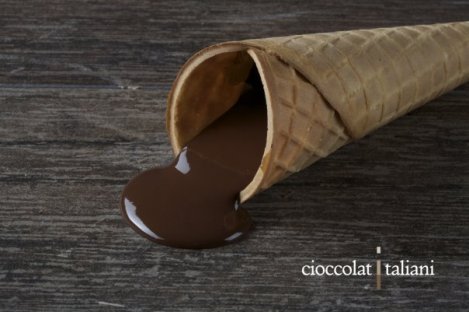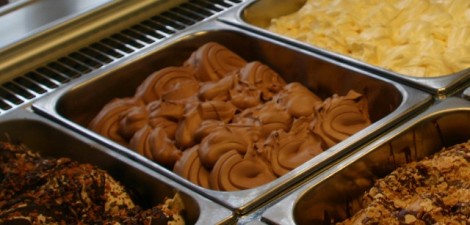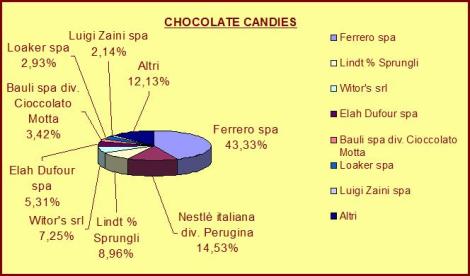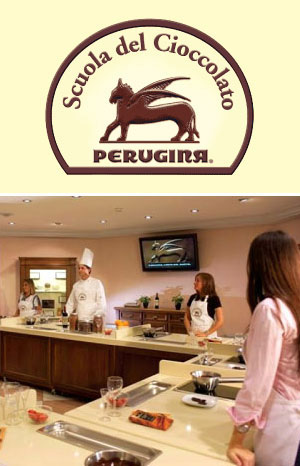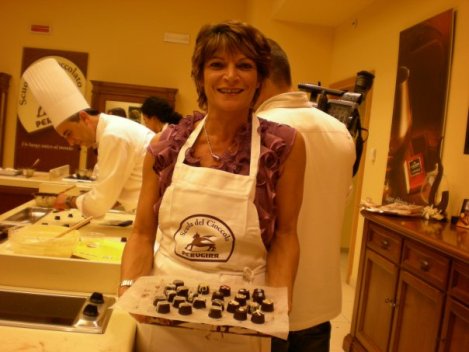Cioccolati Italiani is the best place where you can go if you want to taste real good chocolate! There is a kind of chocolate for each of you, from icecream to bars, brioches, cakes, you just have to think about something and order it: the Heaven!
The first shop was created in Naples on December 2008 and the idea of a place where people could taste precious and unusual chocolate delights hit it big, so they dedided to expand soon in Milan on February 2009. Here customers answered successfully to the new format that was introduced, something original even in such a big city.
Speaking with Vincenzo Ferrieri (his father opened the first shop in Naples) that’s what I discovered:
– How did you develope and spread this new format?
The most difficult thing was to standardize processes in order to materialize what we had in our mind and to create a particular new format, different from the competition, where the act of eating chocolate is an involving experience. The difficulties consisted in finding the right production lines certificates, in the suppliers’ choise, in meeting exactly the unsatisfied needs of consumers… Suppliers are very jealous of their product because they want to be sure that it is used in the right way, promoting its quality and underlining the fair origin.
when we opened in Milan we didn’ t focus on advertising, we simply paid two consulting agencies and a press agency for the first year, which “made the name of Cioccolati Italiani go round”. A big opportunity was the arrangement of the collaboration with the Costa Group at the Furniture Fair. The rsult was that we reached the breakeven point in 8 months, the average is at least one year and half. Despite the consistent initial investment it revealed a great success, considering that the shop is not located on the main street but you have to go intentionally. It was a bet also because in Naples the other confectionery is in a shopping centre, with a different target of clients, different mentality and of course a different format too.
– How did you choose the suppliers?
The secret was starting from the product itself and arriving to the product as it is conceived in the customer’s mind! What stays in the middle is worth of attention anyway. What I’m trying to say is that we wanted to give visibility to small craftsmen, who works in small ateliers and make small delights on their own; the idea was to join them under the same roof to strenghten their position. The first trouble was to match many “First Ladies”, with indepen dent concepts and own skills. We convinced them because we decided to underline quality and to emphasize their name: we don’ t produce chocolate, we select it! In France and Belgium chocolate is produced more or less in the same way, in Italy there is a different tradition in each place: Turin, Perugia, Piemonte, Modena… and for this reason we select the best proposals, Silvio Bessone, Fabrizio Galla, Francesco Sella…
dent concepts and own skills. We convinced them because we decided to underline quality and to emphasize their name: we don’ t produce chocolate, we select it! In France and Belgium chocolate is produced more or less in the same way, in Italy there is a different tradition in each place: Turin, Perugia, Piemonte, Modena… and for this reason we select the best proposals, Silvio Bessone, Fabrizio Galla, Francesco Sella…
– What exactly do you make here?
Pastries are made here, icecream and everything what is connected with the transformation of the craftsmen chocolate. We use the bars of Bessone and Sella to produce delights and Roberto Lobrano takes care of the ice crem processing. An interesting thing that we introduce in the organization is to entrust a specific unit to an expert of the field: Roberto Lobrano for icecream, Besssone, Galla, Deriso for chocolate, Cioccolati Italiani for coffee…
crem processing. An interesting thing that we introduce in the organization is to entrust a specific unit to an expert of the field: Roberto Lobrano for icecream, Besssone, Galla, Deriso for chocolate, Cioccolati Italiani for coffee…
– What about your staff?
Here in Milan there are 18 people, but it is difficult to find skilled people. Two weeks are necessary as vocational education, but in the field of icecream it is one months. Although the turnover of shopassistants is quite high we focused on the support of a kind atmosphere, which can be perceived by our customers too. The strengh point is the relationship with the client because here chocolate is not only food, it is an experience.
– Any future improvements?
Probably we will focus on visual attraction of design. The caveau where we stock bars is fascinating but we need something like a small exhibition of our products in order to attract clients and to make them trying something new or buying something that they wouldn’t have seen behind the counter. With the same purpose we will also add small pieces of chocolate to taste.
Here there are other fotos of the location:
The caveau:
The shop:
Vincenzo Ferrieri:
And that’s to convince you that at Cioccolati Italiani chocolate is an experience: try it!



